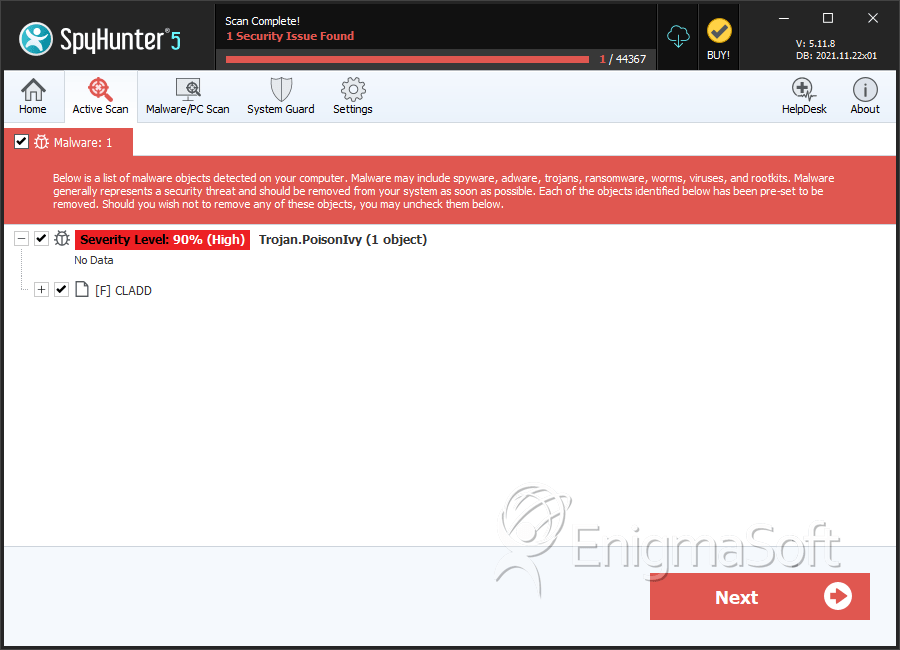Poison Ivy
The Poison Ivy backdoor is thus named because Poison Ivy backdoor creates a backdoor into the infected computer. The Poison Ivy backdoor helps hackers gain access to their victim's system. The Poison Ivy backdoor gained notoriety when Poison Ivy backdoor was used to hack into the RSA. The Poison Ivy backdoor was included in a zero-day Excel exploit that was sent in a very simple email containing an attachment in .xls format. This malware threat is actively updated and developed. Poison Ivy backdoor uses a graphical interface that makes Poison Ivy backdoor ideal for an inexperienced hacker. ESG security researchers strongly recommend removing the Poison Ivy backdoor with an up-to-date anti-malware program.
Table of Contents
How a Hacker Can Use the Poison Ivy Backdoor
The Poison Ivy backdoor is extremely dangerous because it gives the hacker almost total control over the infected computer. This control is also easy to manage due to Poison Ivy's graphical user interface. Below, ESG security researchers have listed some of the common uses for the Poison Ivy backdoor:
- Hackers can use the Poison Ivy backdoor to rename, delete, or run any file on the infected computer. A hacker can also use the Poison Ivy backdoor to upload or download any file from the victim's computer. This second feature is usually used to install additional malware on the infected computer, such as a bot software, a rootkit or an obfuscator, to make detection of the Poison Ivy backdoor problematic.
- Hackers can use the Poison Ivy backdoor to view and edit the Windows Registry and system settings. This can be used to cause irreparable damage to an infected computer or to perform any number of malicious operations.
- A hacker using the Poison Ivy backdoor can view, initiate, and stop file processes and services at will.
- A hacker using the Poison Ivy backdoor can monitor or terminate all network connections or Internet traffic.
- The Poison Ivy backdoor can be used to view all devices installed on the infected computer and even to disable or control them remotely in some cases.
There are some versions of the Poison Ivy backdoor that have been adapted to steal personal information. This is usually done by recording screenshots or using the infected computer's microphone or camera to take video or audio. These variants will often include a keylogger and will try to access passwords and other similar information.
SpyHunter Detects & Remove Poison Ivy

File System Details
| # | File Name | MD5 |
Detections
Detections: The number of confirmed and suspected cases of a particular threat detected on
infected computers as reported by SpyHunter.
|
|---|---|---|---|
| 1. | CLADD | d228320c98c537130dd8c4ad99650d82 | 0 |

